Southern Leyte-Anilao – Dive the Philippines
Date: 31 January - 10 February 2008
Duration: 11 days
Highlights:
Max number of participants: 14 divers.
Days of annual leave: 5
Diving days: 8
Number of dives planned: 22
Number of dives possible: 31
What is in Sogod Bay, Southern Leyte?
Sogod Bay in Southern Leyte offers wonderful scuba diving with spectacular dive sites in one of the Philippines' most recently discovered dive destinations. The prolific marine life ranges from pygmy seahorses through to whale sharks and there is also an incredible variety of extremely healthy and undamaged hard and soft coral. Sogod Bay offers a plethora of pristine reefs and our dive boat will probably be the only one at any given site dived during your stay. Indeed, much of the Sogod Bay area is essentially virgin territory and as a result we are still discovering new dive sites. You can experience all this in a beautiful and peaceful tropical setting and truly relax and enjoy your holiday - without fighting with hoards of other divers!
Our whale shark season starts about November and ends in April. We did 18 whale shark trips last season from Nov 06 to April 07 all were successful. Like all wild animals we cannot predict sightings however whales sharks follow the plankton and jellyfish. Between Nov to April is when we have a lot of plankton and jelly fish in the bay.
Some of the dive sites:
The best of the shore dives
We have 5 great dives right outside the resort. The dives range from 15 up to 40 metres and comprise of: Max's Climax 1 and 2 (wall dives); Voltaire's Rock; Bulawarte and a wreck dive. All our dives have plenty of big fish action when current is moving. We're also lucky enough to have pygmy seahorses, frogfish and hawksbill turtles. Diverse soft and hard corals abound including huge gorgonian fans and a massive number of developed whip corals.
Sunok
Sunok is one of our most established dive sites but has become very popular with whale sharks at particular times of the year. We have been diving with them on a regular basis during the season. The whale shark follows plankton and jelly fish and for that reason we cannot promise they will be there all of the time!
To the North:
To the north of our resort (about 20 to 30 mins boat ride away) we have 3 great dive sites: Bunga Bend; Cantamac and Malitbog Wreck. These sites vary in depth from 15 to 35 metres and have diverse fish and coral life: nudibanches; ribbon eels; pigmy seahorses; ghost pipe fish and manta shrimp.
To the South:
To the south of the resort (about 10 to 30 mins boat ride) we have Medicare and Limasawa Island. Tankan and Santa Sofia has fantastic array of colourful soft corals and huge barrel corals. Mandarin Fish, turtles, eagle rays, batfish and frogfish are frequent visitors to this site. The famous Limasawa Island is not only famous for Magellan's visit but also for the incredible diving. Adrian's Cove and Zack's Cove dive sites are 20 to 50 metres deep and have dark eerie steep walls with gorgonian fans and massive table corals. We often see nudibranchs and occasionally the odd hammerhead!
To the East
Directly across Sogod Bay from our resort lies Panoan Island and Napantao dive site. The dive is also a marine sanctuary with a large wall dropping to depths of 50 metres. Giant gorgonian fans are abundant on the wall. It is spectacular on a sunny day and looks absolutely majestic. When the current is ripping hard large pelagic fish are often seen here. This is one dive you must not miss while your visiting our resort!
Night Dives
Padre Burgos pier and Malibog wreck are our two first class night dives. Both dives are in shallow water. If you are a photographer or want to see something unusual come along on these dives. Seahorse, frogfish, nudibranch, reptilian eel, octopus, razor fish, slipper crabs are only just a few of the creatures you will see while diving at these sites.
What’s in Anilao?
It is known as Macro Heaven. Only 140 km south of Manila, Anilao's proximity makes it a popular destination for weekend diving trips. Even excursions are ideal in this southern town where resorts are situated within short boat rides to excellent dive sites. Diving is mainly in coral slopes and shallow gardens among sandy patches. Choose from any of the 24 dive sites between the coast of Anilao and Maricaban Island. The most popular site is the Cathedral (average of 60 ft.), a roofless cavern with a blessed cross flanked by two large sea mounts. Ideal diving season is from November until May.
A review:
Anilao's reefs house what is undoubtedly one of the two or three greatest biodiversities on the planet. Within an area of less than ten miles, divers can encounter a truly mind-boggling number of species of nudibranchs, hard and soft coral, reef fish, and virtually every other small creature imaginable.
One divesite, in particular, called Basura stands out as being one of the two or three most amazing places I've ever had the good fortune to dive. While there's nothing even remotely beautiful about the site and there's little reason to go deeper than about 30 ft., Basura is one site that never ceases to blow my mind! While a number of locations around the world offer outstanding "muck diving", Basura offers what can best be described as "trash diving" (Basura literally translates to "trash"). This is the kind of place where discarded toys house pregnant Thorny Seahorses (Hippocampus histrix), where old appliances offer refuge to rare, unidentified Octopus (Octopus sp.) and where dumped shoes and combs create camouflage for Wartskin Frogfish (Antennarius maculatus) and Harlequin Ghost Pipefish (Solenostomus paradoxus).
What really makes Basura stand out though is the fact that these creatures, considered the highlights of most dives, don't even make the top 10. At Basura, one is searching for the truly bizarre. Species like Mimic Octopus (Octopus sp.), known to imitate everything from Sea Snakes to Sea Stars to Jellyfish, yellow-green Mantis Shrimp (Pseudosquilla ciliata) and perhaps the most bizarre of all, the Bobbit Worm (Eunice aphroditois). While scientists believe that this species can grow in excess of 20 ft., all that divers encounter is an inch or two of ominous-looking jaws designed to snare just about anything unlucky enough to swim by.
In Anilao, marine identification books are only of so much use as one constantly comes into contact with creatures that simply have not yet been discovered or in the least, formally named. Even though hundreds of thousands, if not millions, of divers have visited these waters, scientists still constantly identify new species on Anilao's reefs.
In Anilao, marine identification books are only of so much use as one constantly comes into contact with creatures that simply have not yet been discovered or in the least, formally named. Even though hundreds of thousands, if not millions, of divers have visited these waters, scientists still constantly identify new species on Anilao's reefs.
- Jeffrey Rosenfeld
Photos taken in Anilao by Paul Ng
Days of annual leave: 5
Diving days: 8
Number of dives planned: 22
Number of dives possible: 31
What is in Sogod Bay, Southern Leyte?
Sogod Bay in Southern Leyte offers wonderful scuba diving with spectacular dive sites in one of the Philippines' most recently discovered dive destinations. The prolific marine life ranges from pygmy seahorses through to whale sharks and there is also an incredible variety of extremely healthy and undamaged hard and soft coral. Sogod Bay offers a plethora of pristine reefs and our dive boat will probably be the only one at any given site dived during your stay. Indeed, much of the Sogod Bay area is essentially virgin territory and as a result we are still discovering new dive sites. You can experience all this in a beautiful and peaceful tropical setting and truly relax and enjoy your holiday - without fighting with hoards of other divers!
Our whale shark season starts about November and ends in April. We did 18 whale shark trips last season from Nov 06 to April 07 all were successful. Like all wild animals we cannot predict sightings however whales sharks follow the plankton and jellyfish. Between Nov to April is when we have a lot of plankton and jelly fish in the bay.
Some of the dive sites:
The best of the shore dives
We have 5 great dives right outside the resort. The dives range from 15 up to 40 metres and comprise of: Max's Climax 1 and 2 (wall dives); Voltaire's Rock; Bulawarte and a wreck dive. All our dives have plenty of big fish action when current is moving. We're also lucky enough to have pygmy seahorses, frogfish and hawksbill turtles. Diverse soft and hard corals abound including huge gorgonian fans and a massive number of developed whip corals.
Sunok
Sunok is one of our most established dive sites but has become very popular with whale sharks at particular times of the year. We have been diving with them on a regular basis during the season. The whale shark follows plankton and jelly fish and for that reason we cannot promise they will be there all of the time!
To the North:
To the north of our resort (about 20 to 30 mins boat ride away) we have 3 great dive sites: Bunga Bend; Cantamac and Malitbog Wreck. These sites vary in depth from 15 to 35 metres and have diverse fish and coral life: nudibanches; ribbon eels; pigmy seahorses; ghost pipe fish and manta shrimp.
To the South:
To the south of the resort (about 10 to 30 mins boat ride) we have Medicare and Limasawa Island. Tankan and Santa Sofia has fantastic array of colourful soft corals and huge barrel corals. Mandarin Fish, turtles, eagle rays, batfish and frogfish are frequent visitors to this site. The famous Limasawa Island is not only famous for Magellan's visit but also for the incredible diving. Adrian's Cove and Zack's Cove dive sites are 20 to 50 metres deep and have dark eerie steep walls with gorgonian fans and massive table corals. We often see nudibranchs and occasionally the odd hammerhead!
To the East
Directly across Sogod Bay from our resort lies Panoan Island and Napantao dive site. The dive is also a marine sanctuary with a large wall dropping to depths of 50 metres. Giant gorgonian fans are abundant on the wall. It is spectacular on a sunny day and looks absolutely majestic. When the current is ripping hard large pelagic fish are often seen here. This is one dive you must not miss while your visiting our resort!
Night Dives
Padre Burgos pier and Malibog wreck are our two first class night dives. Both dives are in shallow water. If you are a photographer or want to see something unusual come along on these dives. Seahorse, frogfish, nudibranch, reptilian eel, octopus, razor fish, slipper crabs are only just a few of the creatures you will see while diving at these sites.
What’s in Anilao?
It is known as Macro Heaven. Only 140 km south of Manila, Anilao's proximity makes it a popular destination for weekend diving trips. Even excursions are ideal in this southern town where resorts are situated within short boat rides to excellent dive sites. Diving is mainly in coral slopes and shallow gardens among sandy patches. Choose from any of the 24 dive sites between the coast of Anilao and Maricaban Island. The most popular site is the Cathedral (average of 60 ft.), a roofless cavern with a blessed cross flanked by two large sea mounts. Ideal diving season is from November until May.
A review:
Anilao's reefs house what is undoubtedly one of the two or three greatest biodiversities on the planet. Within an area of less than ten miles, divers can encounter a truly mind-boggling number of species of nudibranchs, hard and soft coral, reef fish, and virtually every other small creature imaginable.
One divesite, in particular, called Basura stands out as being one of the two or three most amazing places I've ever had the good fortune to dive. While there's nothing even remotely beautiful about the site and there's little reason to go deeper than about 30 ft., Basura is one site that never ceases to blow my mind! While a number of locations around the world offer outstanding "muck diving", Basura offers what can best be described as "trash diving" (Basura literally translates to "trash"). This is the kind of place where discarded toys house pregnant Thorny Seahorses (Hippocampus histrix), where old appliances offer refuge to rare, unidentified Octopus (Octopus sp.) and where dumped shoes and combs create camouflage for Wartskin Frogfish (Antennarius maculatus) and Harlequin Ghost Pipefish (Solenostomus paradoxus).
What really makes Basura stand out though is the fact that these creatures, considered the highlights of most dives, don't even make the top 10. At Basura, one is searching for the truly bizarre. Species like Mimic Octopus (Octopus sp.), known to imitate everything from Sea Snakes to Sea Stars to Jellyfish, yellow-green Mantis Shrimp (Pseudosquilla ciliata) and perhaps the most bizarre of all, the Bobbit Worm (Eunice aphroditois). While scientists believe that this species can grow in excess of 20 ft., all that divers encounter is an inch or two of ominous-looking jaws designed to snare just about anything unlucky enough to swim by.
In Anilao, marine identification books are only of so much use as one constantly comes into contact with creatures that simply have not yet been discovered or in the least, formally named. Even though hundreds of thousands, if not millions, of divers have visited these waters, scientists still constantly identify new species on Anilao's reefs.
In Anilao, marine identification books are only of so much use as one constantly comes into contact with creatures that simply have not yet been discovered or in the least, formally named. Even though hundreds of thousands, if not millions, of divers have visited these waters, scientists still constantly identify new species on Anilao's reefs.
- Jeffrey Rosenfeld
Photos taken in Anilao by Paul Ng
Requirements:
Minimum Advanced Open Water with 40 dives.
Itinerary:
Participants from Jakarta will leave one day later.
Jakarta-Manila flight: 31 Jan 5J760 JKT-MNL ETD 00.30 ETA 05.20
Wed 30 Jan 08
10pm meeting at Singapore Budget Terminal
Thu 31 Jan 08
12.30am flight to Cebu
5am arrival in Cebu, transfer to Kiwi Lodge http://www.kiwilodge.org/
Fri 1 Feb 08
5am transfer from hotel to Pier
6am Ferry to Ormoc (Supercat).
830am Van transfer to resort
11.30pm arrive at resort. Lunch.
2 dives (night dive optional)
Sat, Sun, Mon, 2, 3, 4 Feb 08
3 dives/day. Night dive optional.
Tue 5 Feb
12pm check out of resort, transfer to Tacloban airport
5pm flight to Manila
Overnight Manila http://www.asiahotels.com/hotelinfo/Citadel_Inn_Hotel_Makati_Manila/
Wed 6 Feb
7am transfer to Anilao. 3 boat dives. Unlimited shore dives.
Thu, Fri, Sat 7, 8, 9 Feb
3 boat dives/day. Unlimited shore dives. Night dive optional. No night dive on Sat 9 Feb.
Sun 10 Feb
Transfer to Manila. Flight back to Singapore/Jakarta.
11 Feb MNL-JKT 5J759 ETD 2055 ETA23.45
Jakarta-Manila flight: 31 Jan 5J760 JKT-MNL ETD 00.30 ETA 05.20
Wed 30 Jan 08
10pm meeting at Singapore Budget Terminal
Thu 31 Jan 08
12.30am flight to Cebu
5am arrival in Cebu, transfer to Kiwi Lodge http://www.kiwilodge.org/
Fri 1 Feb 08
5am transfer from hotel to Pier
6am Ferry to Ormoc (Supercat).
830am Van transfer to resort
11.30pm arrive at resort. Lunch.
2 dives (night dive optional)
Sat, Sun, Mon, 2, 3, 4 Feb 08
3 dives/day. Night dive optional.
Tue 5 Feb
12pm check out of resort, transfer to Tacloban airport
5pm flight to Manila
Overnight Manila http://www.asiahotels.com/hotelinfo/Citadel_Inn_Hotel_Makati_Manila/
Wed 6 Feb
7am transfer to Anilao. 3 boat dives. Unlimited shore dives.
Thu, Fri, Sat 7, 8, 9 Feb
3 boat dives/day. Unlimited shore dives. Night dive optional. No night dive on Sat 9 Feb.
Sun 10 Feb
Transfer to Manila. Flight back to Singapore/Jakarta.
11 Feb MNL-JKT 5J759 ETD 2055 ETA23.45
Dive Sites:
Coordinators:
Participants (13):
 Irene Pramudito
Irene Pramudito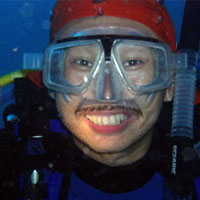 Tom Fadjar Chandra
Tom Fadjar Chandra David Leksono
David Leksono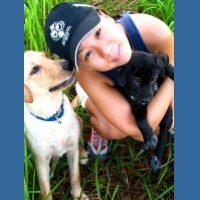 Mia Aristanti
Mia Aristanti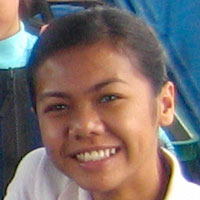 Erika Tobing
Erika Tobing Eric Loh
Eric Loh Eric Lee
Eric Lee Tania Wee
Tania Wee Bruce Edward Lee
Bruce Edward Lee Rudy Lim
Rudy Lim Angel Lim
Angel Lim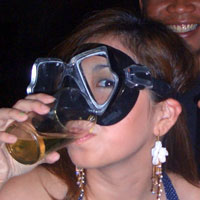 Yong Lee Ming
Yong Lee Ming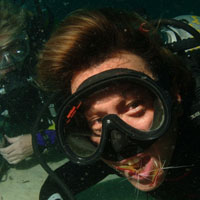 Andrew Chieng
Andrew Chieng